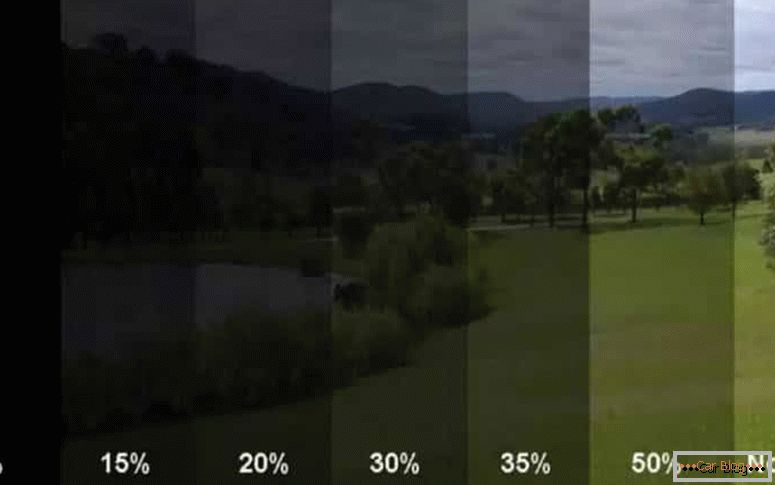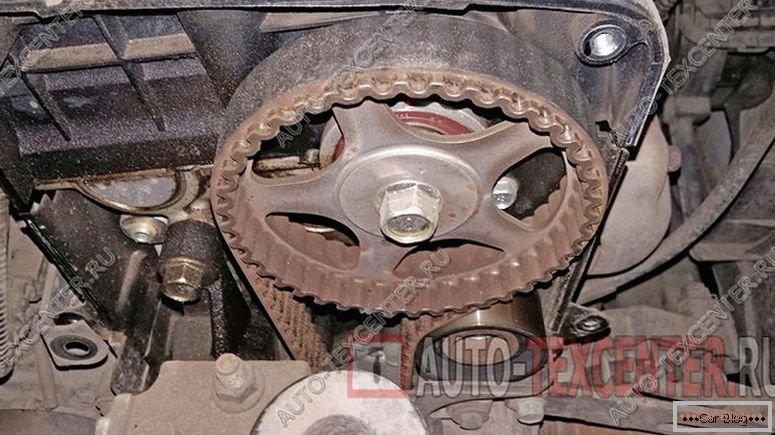>
Most drivers, both experienced and newcomers, are quite scrupulous about changing the oil filter, trying to comply with the recommended time limits recommended by the manufacturer. But with regard to the air filter, the situation is slightly different. And it is completely in vain - an untimely replacement of this expendable material threatens with no less trouble. Problems will begin to arise gradually, but sooner or later, a completely clogged air filter will lead to the failure of such important components as the fuel system and the piston group. The reason is simple - getting into the fuel and the combustion chamber of small particles in abundance contained in atmospheric air, which leads to the formation of carbon and deterioration of the mechanical properties of the piston.
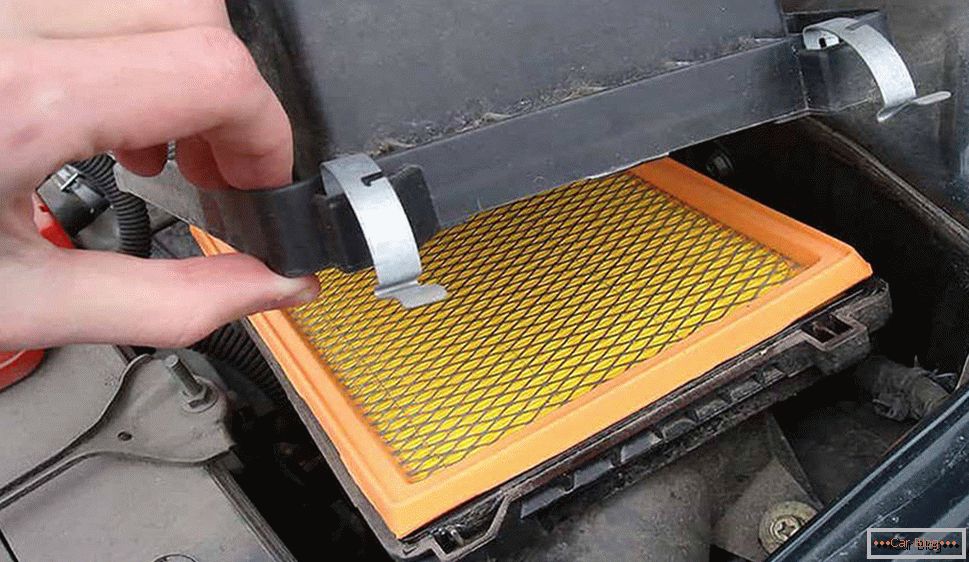
Select air filter.
Читать далее про то как правильно выбрать воздушный фильтр-->
Few numbers
If you think that the car consumes only fuel and lubricants, then you are deeply mistaken. Like a person, any vehicle needs air. According to average calculations, for every ten liters of gasoline burned, there are about 105-110 kg. air, which is vital for the combustion of fuel. Are you not very impressed with this figure? Then imagine two railway tanks - the indicated amount of air is contained in a volume of about 120 cubic meters. And hardly anyone needs to prove that the air that the car “breathes” is not sterile at all. But how much it is polluted depends on which roads you drive. It turns out that here you can not be unfounded: the ubiquitous environmentalists have already calculated everything. Here is the dependence of the concentration of pollutants, measured in mg./m3, depending on the road and regional conditions:
- European roads - 0.25 - 1.0;
- Scandinavian roads - 0.85 - 5.0;
- roads of southern Europe - 1.0 - 6.5;
- construction area - 4.5 - 15.0;
- rural roads without hard surface - 6.5 - 20.0;
- motorcade moving along a dirt road - 9.5 - 80.0;
- convoy of tracked vehicles - 18.0 - 200.0.
As you can see, the usual domestic passenger car, depending on external conditions, consumes air containing from one to fifty mg / m3. Simple calculations suggest that with a run of 15 thousand kilometers (about as much as a car is being measured for another technical inspection), about 20 thousand cubic meters of atmospheric air passes through the power unit. And this volume will contain, again, depending on road conditions, from 10 grams to a kilogram of dust. If you assume that you drive only on asphalt roads, these figures can be averaged up to 200 grams, if the engine is diesel or high power, then multiply by a factor of 1.5 - 2 (it is not accidental that two air filters are installed on many powerful cars).
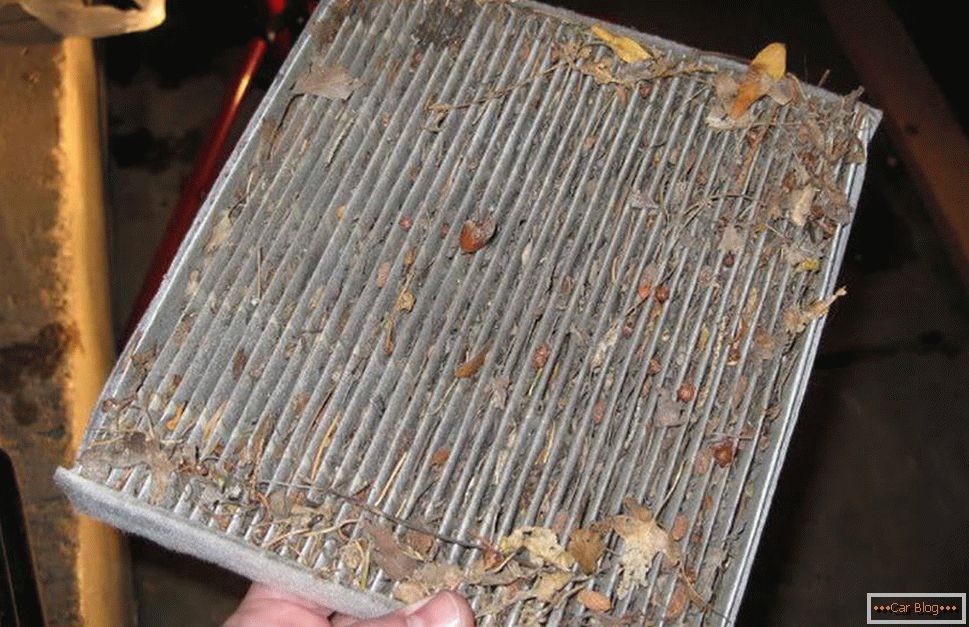
It is also known that the sizes of particles, which we call dust and usually do not notice, can vary within fairly wide limits, from a hundredth of a micrometer to 2 millimeters, while in a weight ratio of dust particles measuring 10–100 micrometers make up . It is worth considering that such large variations are caused by external conditions, as already mentioned above, therefore in cities where much attention is paid to wet road cleaning, this figure will be lower. But still, in this aspect, we are significantly inferior to cities in developed countries.
Due to the contamination of the air filter, the quality of air filtration may decrease by an order of magnitude, which means that dust of different sizes gets into the power unit, polluting, including engine oil. Together with the lubricating fluid, dust particles fall into zones that must be in a perfectly clean state — for example, in ring grooves, on cylinder walls, and penetrate into crankshaft bearings. And although it seems that dust particles are so ephemeral to the point that they cannot harm the metal parts that make up the engine, remember the saying “water wears away a stone”. Here we are not talking about liquids, but about solid particles, which when released into moving parts inevitably cause their premature wear.
Another unpleasant consequence of the untimely replacement of the air filter is the contamination of the sensor RTM (mass air flow), installed on many models of cars directly after the air filter. And since this sensor is responsible for regulating the flow of air into the engine to form a fuel-air mixture, it begins to distort the readings, which causes a loss of engine power. The consequence of this is an increase in fuel consumption and an increase in the emission of harmful substances. The latest generation air filters provide a high degree of air purification from mechanical particles - from 99.75% in passenger cars to 99.95% in freight vehicles. Ignoring the routine procedures for their replacement reduces this figure by an order of magnitude.
Types of air filters, their advantages / disadvantages
Despite the triviality of the problem being solved by the air filter, as well as the seeming primitiveness of their design, there are several varieties of these devices, each of which is distinguished by its own set of pros and cons. Moreover, it is possible to install various modifications of filters on one and the same car model, so choosing the “right” air filter even for experienced drivers becomes a daunting task. To understand which air filter to choose for a particular car, it is necessary to clearly understand the design features, advantages and disadvantages of all existing varieties.
"Dry" paper air filters
A characteristic feature of such filters is the use of a special corrugated lint paper as a filter element. It is due to the structure of this material, which is a thick layer of the finest fibers, that all the pollutants stuck in these fibers are filtered. At the same time, air molecules, possessing much smaller sizes, freely penetrate through such paper. Externally, the dry-type paper filter resembles an accordion rolled into a cylinder. The standard resource of such filters is 10,000-15,000 kilometers. If the vehicle is operated sparingly, the operation of replacing the paper air filter should be performed once every 2 years.

The main advantage of air filters of this type is their low cost, although in shape, size and even structurally they can be very different. As a rule, it is quite simple to change such a filtering element, and a beginner can easily cope with this operation. It should be understood that it is impossible to clean or wash such paper - corrugated filters are a consumable material. Their main disadvantage is the rapid loss of capacity in relation to atmospheric air: as the amount of air contaminated for the engine is polluted, the amount of air mixture intended for the engine will decrease, which inevitably affects the decrease in vehicle dynamics.
Oil air filters
If paper filters are in demand because of their cheapness, then liquid (oil) filters are very popular because of the possibility of repeated use. The design of such devices is a little more complicated and is a metal case filled with mineral oil, through which the atmospheric air passes. As the air filter is washed, it is washed and filled with fresh oil (usually “working out” is used for this purpose). The main drawback of oil filters is considered to be an insufficiently high degree of air purification, therefore such filters are practically not used in modern trucks and cars.
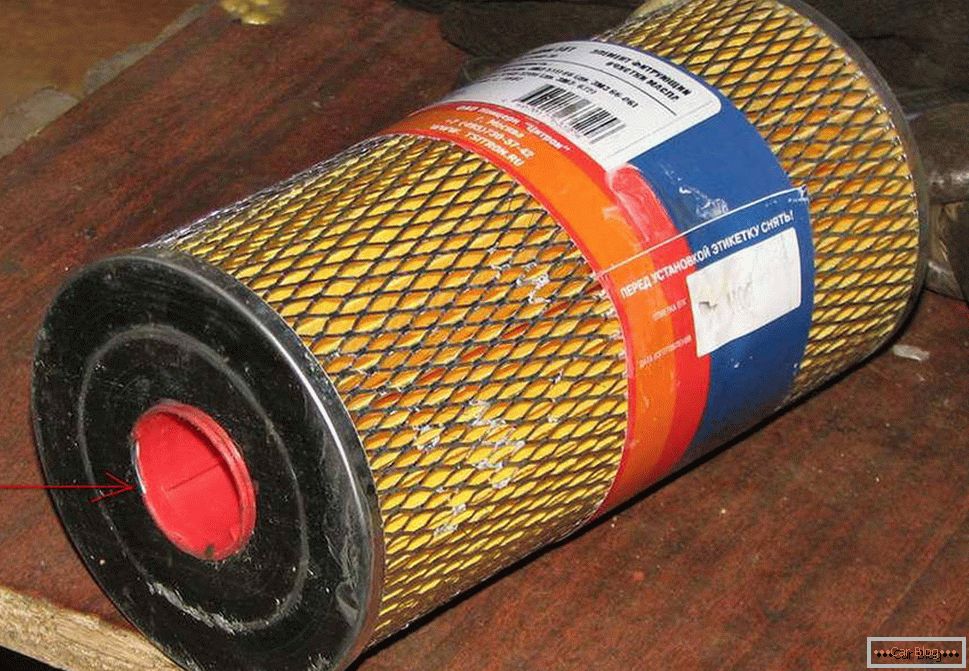
Zero resistance filters
Reducing the air intake resistance is the main task that designers of air filters have to face. The so-called “zero resistance filters” really improve this indicator, which allows you to increase the power of the car by about 5%. This is achieved due to the sophisticated design of the filter, which has the form of a cone with a corrugated filter element, which is made of foam rubber, padding polyester or other similar multilayer materials. Such a filter is installed on a car without an external case and is impregnated with oil, which acts as an additional dust-binding material. Of course, the noise performance of the intake path also increases.
As a rule, such filters are installed in sports or tuned cars, characterized by increased power of the power unit  Discounts for new cars! Profitable loan from 9.9% installments 0%
Discounts for new cars! Profitable loan from 9.9% installments 0%  adom.ru. Therefore, the noise parameter plays a minor role here. In such filters, the resistance to air flow is indeed less than that of a classical paper one, but their main drawback is the need for regular maintenance (periodic oil impregnation, complicated cleaning technology), as well as a reduced degree of air purification.
adom.ru. Therefore, the noise parameter plays a minor role here. In such filters, the resistance to air flow is indeed less than that of a classical paper one, but their main drawback is the need for regular maintenance (periodic oil impregnation, complicated cleaning technology), as well as a reduced degree of air purification.
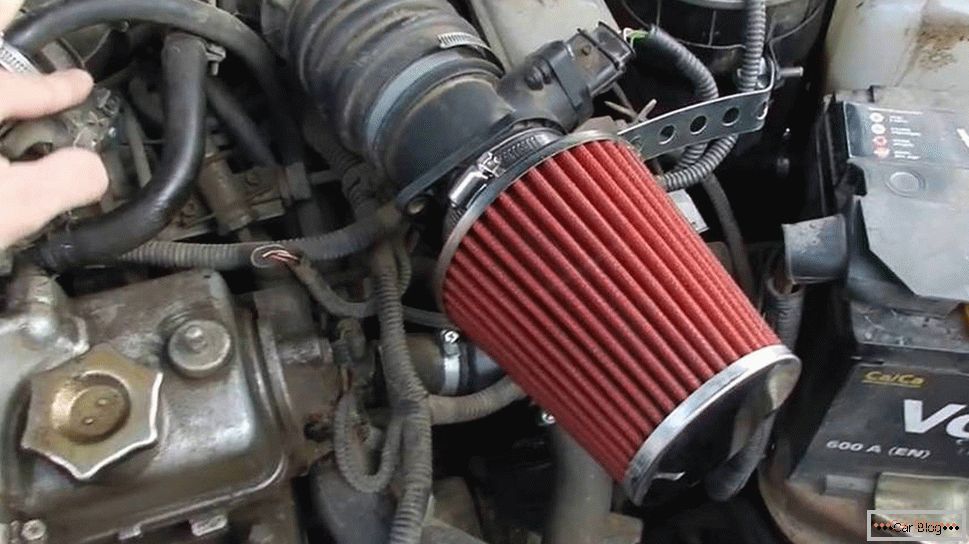
Air filters Short ram intake, Cold air intake
The main distinguishing feature of both types of air filters is the presence of a metal (usually made of aluminum) pipe to which a dry filter is attached. Such a cleaning system is mounted directly in the engine compartment, but if the Short ram intake filter has a very short pipe length, which simplifies the design and makes its installation easy and fast, then Cold air intake has a long pipe extending down to the engine.
In both types of air filters, replacing the cartridge with a filter element is very simple, especially for a “short” system, and its main drawback is considered to be highly heated air due to the proximity of the pipe to the power unit, which degrades the quality of the fuel-air mixture. In addition, the filter with a short pipe is quite noisy, which cannot be said about the Cold air intake. But the air filter with a long pipe is more expensive, its installation is more complicated (in some cases it is necessary to dismantle the wheel), and there is always a risk that water will get into the pipe, which is fraught with great trouble. Therefore, air filters with nozzles are usually also installed on cars with forced engines.
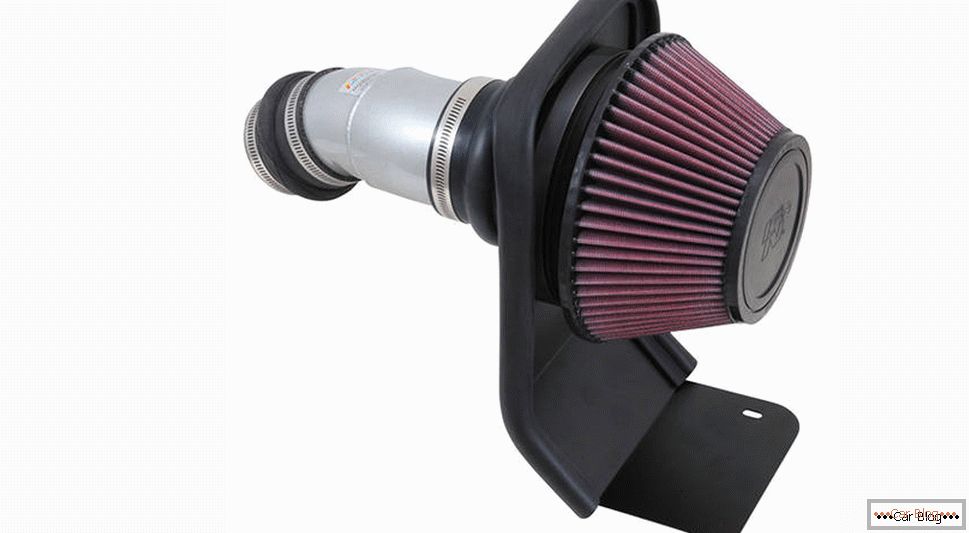
Filter selection depending on material
The car in very rare cases, operated exclusively in ideal conditions. Usually we do not postpone a trip when it is cold outside or extreme heat, it snows or it rains for weeks. This means that an air filter, which is to a certain extent vulnerable to external conditions, must provide an acceptable level of protection against dirt, crankcase gases, fuel, water and engine oil entering the filter due to the back diffusion phenomenon. Finally, the material from which the air filter is made must be resistant to high temperatures (about 90 ° C).
Since the most common are dry filters, in the future we will be talking about them. It should be understood that such devices are called paper purely conditional. In fact, the filter elements are made from both fibers / materials of natural origin (in particular, cellulose), and from synthetic materials with the necessary characteristics (polyester). At the same time, paper filters retain most of the pollutants in the upper layer, then for elements made of nonwovens, filtration occurs almost uniformly throughout the entire layer. An important parameter of air filters is their absorption capacity. The table below shows how this characteristic differs for the different types of materials from which the filter element is made:
| Material | Density, g / m2 | Specific absorption of the filter element, g / mg |
| Cellulose Filter | 100.0 – 120.0 | 190.0 – 220.0 |
| Composite Multilayer Filter | 100.0 – 120.0 | 230.0 – 250.0 |
| Nonwoven filter | 230.0 – 250.0 | 900.0 – 1100.0 |
As you can see, although the filtering elements made of synthetic materials weigh almost twice as much, they are almost five times more absorbent than paper and composite analogues, mainly due to the absorption of pollutants throughout the entire thickness, and not just in the near-surface layer.
Much more informative is another indicator - the degree of purification of the air filter depending on the materials used. Here is a table compiled from the results of numerous studies of exactly this characteristic of dry filters:
| Material | Atmospheric air filtration efficiency | ||
| Passenger cars with a gasoline engine | Diesel passenger car | Diesel Power Truck | |
| Paper filter | 99.50% | 99.50% | 99.80% |
| Composite filter | 99.55% | 99.75% | 99.85% |
| Non-woven filter element | 99.80% | 99.90% | 99.90% |
In terms of filtration efficiency, the advantage of non-woven material is not so obvious (tenths of a percent), so many motorists prefer paper cartridges because of their low cost. However, it is necessary to take into account the fact that when driving in wet weather moisture on the filter element can not be avoided, and filters made of nonwoven materials, when wetted, provide five times less resistance to air flow. So, for Russian conditions, the advantages of using just such air filters become more than obvious.
The dependence of the air filter model on engine design
The choice of material for air filtration is not the only criterion that should be considered. Air filters come in various shapes and sizes. Designers of cars, of course, try to follow certain standards in the industry, but after all, technical progress does not stand still, and the design features of new power units do not always allow the use of components and parts from old engine models. Therefore, for different models of vehicles may require filters with their original dimensions. Usually, when going to the store, car owners do not consider it necessary to take the old filter with them or at least remember its model / modification. However, not every seller is able to determine which air filter is needed for a particular car model, which may be the reason for purchasing an unsuitable product if the buyer only focuses on its shape and approximate dimensions. Take care of the knowledge of all the characteristics of the air filter should be in advance, it is not the responsibility of the seller.
In addition, there are many models that are installed on different power units. Accordingly, air filters may require different. The most obvious example is VAZ-2107/2108/2109 and Samara cars. On the early models of these cars installed carburetor and injection engines, so the air filters for these modifications are not interchangeable by 100%. Even if you succeed by means of certain manipulations to install the filter from the carburetor version on the injector, you should understand that for a car with an injection system of injection, the requirements for cleanliness of air are higher. And in general, there is a definite correlation between the degree of air purification and air filter capacity, and the improvement of one parameter due to the deterioration of the other is not the best solution to the problems. In other words, by installing a filter with a higher filtering rate of contaminating particles, you can thereby create a situation in which the engine will feel a shortage of air, which will adversely affect its durability.
Filter selection depending on manufacturer
Существует и другая проблема при выборе воздушного фильтра для его замены: для одной и той же модели авто можно найти множество вариантов фильтра, отличающихся стоимостью и, соответственно, качеством. How to choose the right air filter для автомобиля, ориентируясь на оптимальное соотношение указанных параметров? Ответ на этот вопрос не так прост, как кажется. Дело в том, что все запчасти и расходники для авто, в том числе и воздухофильтры, делятся на три категории:
- original;
- quality copies;
- 'Noname' articles.
The latter option is usually the most democratic in value. Often, owners of used cars choose it, trying to save on operating costs. Predicting the consequences of such savings is extremely difficult - the filter can both work out without consequences for the engine all the due time, and cause premature failure of the power unit. Original filters are the most expensive, as manufacturers guarantee the high quality of both the entire product and its individual components. It should not be forgotten that such manufacturers invest a lot in the research of more advanced filters, which the companies producing copies do not.
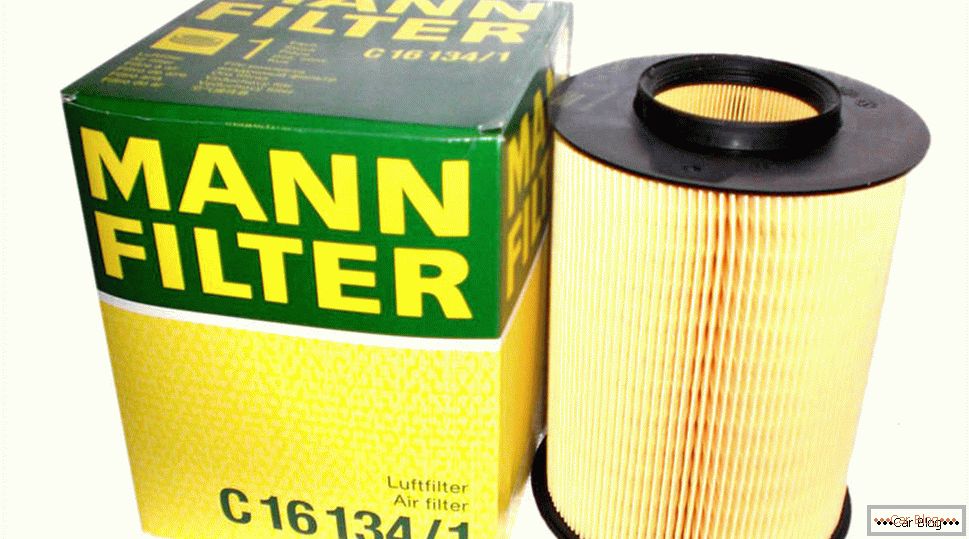
Among the original brands include the following manufacturers of automotive filters:
- Mann;
- Knecht;
- Champion;
- Mahle;
- Bosch.
Manufacturers of high-quality copies use practically the same technologies and materials as manufacturers of original filters, and the lack of research and development costs allows them to offer a lower cost of the final product with practically the same quality. Knowledge of the names of such companies will allow you to save a little, although with respect to inexpensive paper air filters, such savings will be very small. And yet we give a small list of companies belonging to the second category: Wix, Hans Price, Fram, Kager, Nipparts, Starline.
Consequences of using poor quality / inappropriate filters
If you belong to the category of accurate owners of vehicles that responsibly address the issues of timely replacement of consumables, this does not guarantee the absence of problems if the air filter you purchased does not meet specific requirements in terms of its characteristics. In particular, the use of an unsuitable material as a filtering element can lead to its premature clogging, as a result of which the filter resistance will increase significantly. And this will lead to disruption of the normal mixture formation, to an increased consumption of gasoline / diesel fuel, to a deterioration in the acceleration dynamics. If you drive on such a clogged filter for a long time, there is a risk of destruction of the filter curtain, and then the degree of air purification will sharply decrease. And it already threatens with rapid wear of parts and assemblies of the power unit.
So you should periodically check the condition of the air filter, without waiting for the arrival of a regular run. Simply shaking the filter will not improve its throughput, especially when using non-woven filter elements. Attempting to flush it is an option that is generally unacceptable, since dismounting of water and dust will create a film that will practically not let air through. So you should not try to restore the performance of the air filter yourself, given its low cost.

